Millet cultivation techniques: measures of millet field management and control methods of millet diseases and insect pests
Do you know millet cultivation techniques and field management? Are you aware of soil selection and soil preparation, sowing and intercropping, weed control and ploughing? There is also the prevention and control of diseases and insect pests. If you don't understand, let's take a look.
(1) soil selection and application of basic fertilizer for soil preparation
Millet is most suitable for soils with good structure, high content of organic matter and soft texture, such as loam, sandy loam and clay loam. Millet is not suitable for continuous cropping, so planting should be combined with fallow, rotation of green manure or legume crops to cultivate soil fertility.
Because the seeds of millet are small, leveling and breaking the clods in the field before sowing can avoid the loss of larger clods and hinder germination. If the soil is dry before soil preparation, it should be irrigated first and then drained to keep the soil moisture content at 15-20% humidity for operation.
The amount of fertilizer required for millet is about 50 kg of nitrogen: phosphoric anhydride: potassium oxide per hectare, and the base fertilizer is applied during soil preparation before sowing. If you plan to use compound fertilizer, you can use Taiwan Fertilizer No. 5 compound Fertilizer (N:P2O5:K2O=16:8:12). Half of 600kg per hectare is used as base fertilizer, and the remaining 300kg is divided into primary or secondary topdressing.
(2) sowing and intercropping
Millet seeds are dormant and should be properly stored before sowing. Before sowing, millet seeds should be taken out and exposed to the sun for 1-2 days every 2 months before sowing. The seeds used should not be too old, and the germination rate is very low if they are more than two years old. The seeds before sowing should be carefully selected, and the seeds should be dried in sunny weather for 2-3 days half a month before sowing.
There are two planting periods of millet in Taiwan: spring cropping and autumn cropping. The sowing time of spring cropping is from early to late February, and autumn is from early to late August. The sowing rate is 8-10 kg per hectare. Before sowing, open a shallow ditch with a row spacing of 30 cm, sow the seeds by strip sowing, and then cover the soil.
About 20 days after sowing, the millet leaves were pulled out between 5 and 6 leaves. In the way of keeping millet seedlings, the distance between millet seedlings is about 10 cm, leaving 1 / 2 seedlings, so the number of plants per hectare is about 330000.
(3) Control of weeds and cultivation of soil by ploughing
Weed control: the use of pre-germination herbicide to control weeds before sowing can save labor. After seed covering, 50% Lioulong wettable powder is sprayed, diluted 1000 times, 1 kg per hectare, or 21% Bailong wettable powder, diluted 4000 times, 400g per hectare, which has the least effect on millet germination and effectively inhibits the growth of weeds. At booting stage, 200 times diluted with 44% Bundarone solution and 3 liters per hectare, the growth of weeds could be inhibited during the whole period and the yield and quality of millet would not be affected.
Mid-tillage soil cultivation: cultivating soil during growth is also one of the ways to control weeds. Mid-tillage can regulate soil ventilation and water status, promote the activity of aerobic microorganisms, strengthen the decomposition of organic matter, and prevent lodging. Millet can be ploughed at seedling stage, jointing stage and booting stage, middle tillage and interseedling at the same time, and the second intermediate tillage at jointing stage, with irrigation and fertilization at the same time, the general depth is 7-10 cm. Ploughing in the booting stage should not be too deep so as not to damage the root system, it is generally appropriate to 5 cm, and the height of soil cultivation is mainly based on the basal node of aerial root.
(4) Application of topdressing
During the growth period, the absorption of the three elements of fertilizer in spring was larger than that in spring. There were significant differences in fertilizer absorption at different growth stages, in which the amount of fertilizer required from booting to heading stage was the highest, and the nutrient absorption decreased gradually after heading. For the first time, millet topdressing was applied with half nitrogen fertilizer and half potassium fertilizer per hectare. If Taiwan fertilizer No. 5 compound fertilizer was used, 150 kilograms per hectare was applied 30 days after sowing. The second topdressing was about 50 days after sowing.
(5) Irrigation and drainage
During the growth period, the millet was irrigated for 1 to 3 times, and the millet was irrigated only when the climate was dry. Moderate drought in the seedling stage was beneficial to the growth. The water requirement of millet was higher before and after jointing stage and from booting stage to heading stage. Irrigation should be carried out if there is no proper rainfall in the milk stage and mature stage, and irrigation is also needed if there is no proper rainfall in the milk stage and after the mature stage, but the water demand is not large at this time. Heavy rain and stagnant water in the seedling stage will affect the seedling growth, the flowering stage will affect its pollination and lead to incomplete pollination and the formation of empty grains, milk stage and mature stage often lead to plant lodging and diseases and insect pests, which should be ditched and drained.
■ disease, insect and bird damage and their prevention
(1) Diseases: there are eight main diseases of millet, including those caused by fungi, bacteria, viruses and nematodes. The main symptoms and control methods are as follows.
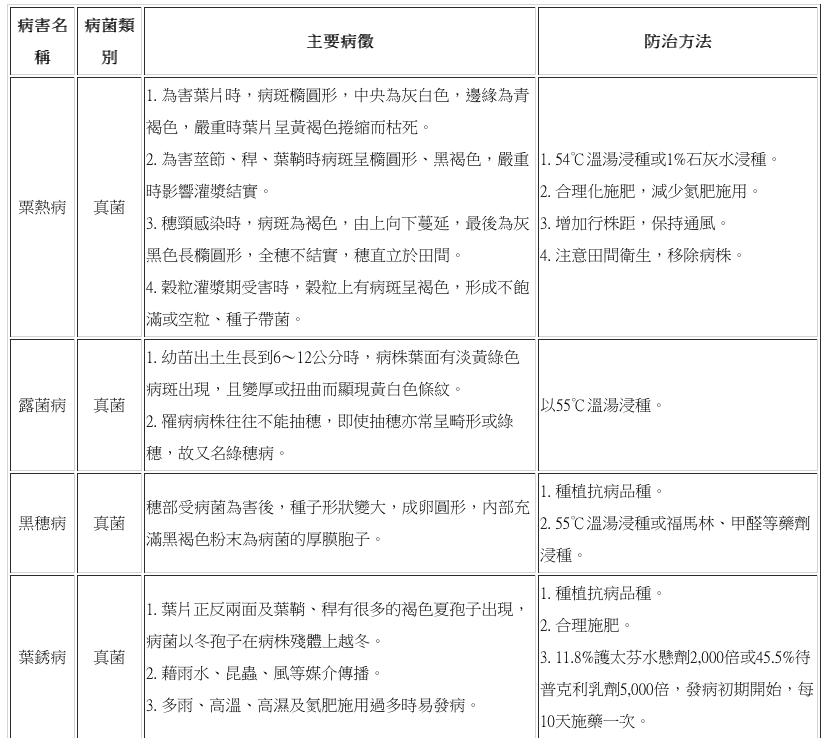
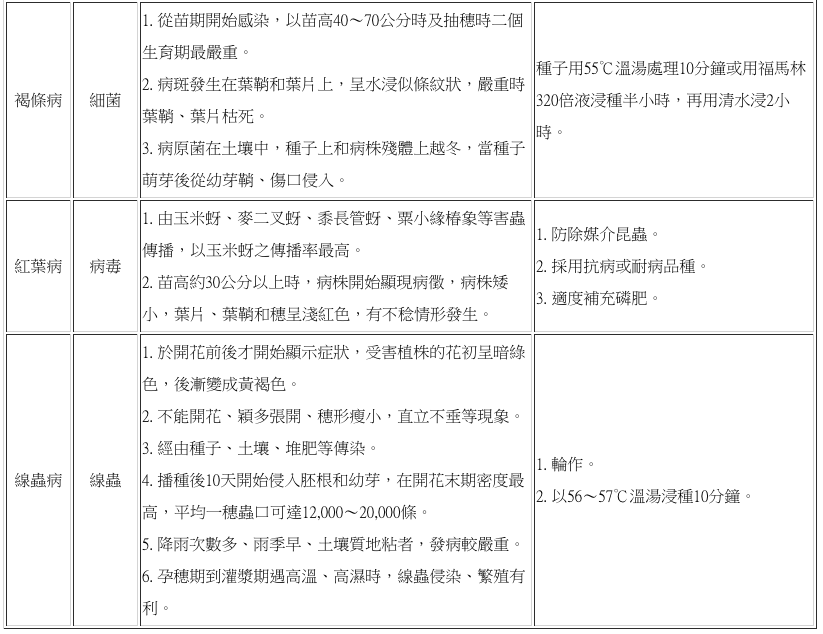
Disease control should vary according to different regions and species, but according to the actual occurrence degree in the field, the principles of disease control are as follows:
Rotation: it is appropriate to have more than half a year of fallow or rotation, white hair bacteria can survive for three years, so if the millet field has the disease, it is best to have an interval of more than three years when replanting.
Selection of disease-resistant or disease-tolerant varieties: although there are no variety disease identification materials available in Taiwan, they can be retained or negotiated for observation.
Seed treatment: pathogens can be prevented by seed treatment such as seed soaking in warm soup, dressing and so on.
Adjusting sowing time: when the ground temperature is low, the unearthed time of seeds is prolonged, the chance of pathogen invasion in soil is increased, and sowing at slightly higher temperature can reduce the occurrence of diseases.
Strengthen field management: through ploughing, weeding, fertilization, irrigation and other measures, some diseased plants can be removed, the source of infection can be reduced, and because of good management, the cultivation of healthy plants can increase disease resistance or tolerance.
Chemical control: according to different types of disease control, can achieve rapid, accurate effect, only the appropriate period, appropriate medicine, appropriate amount and other principles must be observed.
(2) pests: according to the different parts of millet plants harmed by pests, they are divided into underground pests, stem pests and ear pests. The degree of damage and control methods are described in the table below.
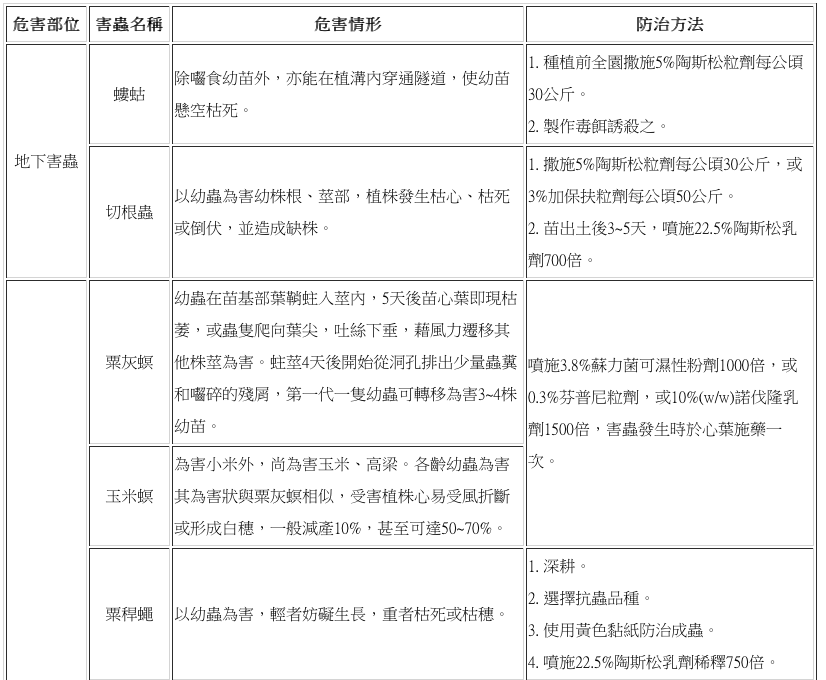
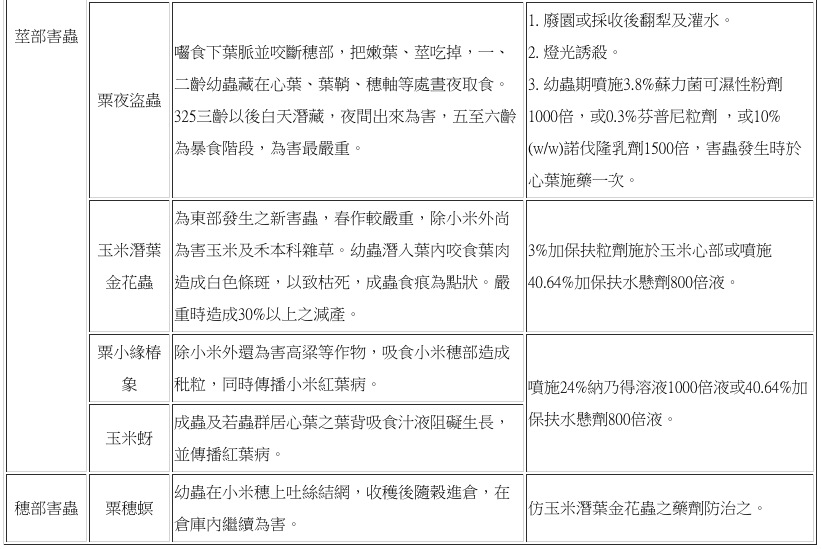
- Prev
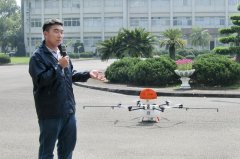
Application of UAV in Agriculture: agricultural UAV spraying and fertilization disaster investigation
Nowadays, drones are more and more widely used, and they are also used in agriculture. Let's take a look. Unmanned aerial vehicle is expected to be the new right-hand man for the future development of agriculture. Not only the Civil Aviation Administration has made great efforts to formulate laws and regulations, but more than 250 grams will be needed in the future.
- Next
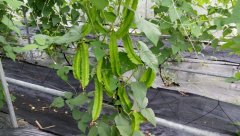
Wing bean: how did you get it? Can I eat winged beans raw?
Have you ever seen beans with wings? If you haven't seen it before, let's find out about it. This kind of bean not only looks better than ordinary beans, but also has green pods, excellent pods and crisp taste. Spring cropping can produce high quality young pods. Can I eat winged beans raw? Should
Related
- A one-day flower show brings 130 million yuan in orders! Nanhai, this Phalaenopsis exhibition is amazing
- What do the flower language and meaning of Lutheran tree mean? Precautions for planting Lutheran tree
- Encounter Chaoshan Kongfu tea, not without this cup of Phoenix single clump
- The durian market in Vietnam and Thailand is flooded. The price of imported durian has plummeted by 30-40% in a month.
- Shanghai solved the problem of local vegetable supply by planting 80,000 mu of green leafy vegetables.
- Wageningen University has become the best agricultural university in the world for the seventh time in a row.
- The strongest export season of South African grapes is full of challenges, with exports to Russia falling sharply by 21%.
- Sri Lanka is on the verge of bankruptcy, "Tea for debt" Organic Agriculture Revolution aggravates the Food crisis?
- Turning waste into earthworm manure and worm manure into organic fertilizer-A new choice for auxiliary farming
- Organic rice growers shoulder the responsibility of nurturing agricultural talents! Yinchuan Sustainable Farm with Organic Life Camp

